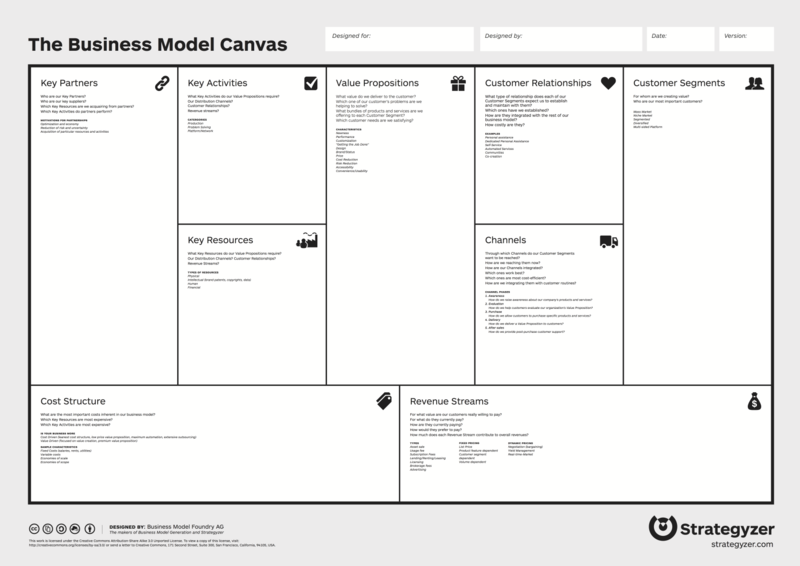In today's digital era, amid escalating business competition, companies are relentlessly seeking methods to enhance their business efficacy. One highly effective approach is the utilization of the Business Model Canvas. This model offers a comprehensive view of a business's operations, aiding companies in crafting more potent strategies. In this article, we delve into what the Business Model Canvas entails, how to leverage it effectively, and its pivotal role in achieving business success.

The Business Model Canvas serves as a strategic management tool facilitating the design and development of business models. Devised by Alexander Osterwalder and Yves Pigneur in 2010, this model has garnered widespread adoption among companies worldwide, regardless of size. It provides a straightforward yet robust framework for visually representing a business model.
Comprising nine pivotal elements, the Business Model Canvas guides businesses in crafting and refining their strategies:
- Customer segment: Identifying the targeted customer group.
- Value proposition: Defining the value offered to customers.
- Distribution channels: Determining how products or services are sold and distributed.
- Customer relationship: Specifying the desired type of customer interaction.
- Key resources: Identifying the essential resources for business operations.
- Key activities: Outlining the critical activities required to generate value.
- Key partners: Identifying partners or collaborators crucial for business operations.
- Revenue: Enumerating the sources of income.
- Cost structure: Detailing the expenses incurred in running the business.
By delineating these elements, companies can gain a holistic view of their business model. The Business Model Canvas facilitates understanding the interplay among these elements and how they collectively generate value for customers.
One of the primary advantages of employing the Business Model Canvas is its facilitation of testing and refining new business models. This tool enables companies to explore how adjustments or enhancements to key elements can bolster business efficacy. Moreover, it streamlines communication with internal teams and external stakeholders, including investors and partners.
Steps in Utilizing the Business Model Canvas
The initial step entails comprehending the nine key elements outlined above. Subsequently, companies meticulously evaluate each element's significance and its interconnectedness with others. Upon grasping these fundamentals, companies proceed to populate the Canvas with pertinent information for each element. This could involve using post-it notes or separate documents for detailed descriptions.
Once all elements are populated, companies embark on evaluating the overall business model, identifying areas for optimization, and devising strategies for enhanced effectiveness. Iterative refinement may involve modifying or adding elements to cultivate a superior business model. Following this, companies implement the revised strategy, ensuring seamless integration of each element to deliver value to customers. Continuous monitoring and adjustments are imperative post-implementation.
Advantages of Employing the Business Model Canvas
The adoption of the Business Model Canvas offers myriad benefits:
- Clarity in business model visualization: Facilitates a clear understanding of the business model's intricacies.
- Enhanced business effectiveness: Enables identification of avenues to enhance business efficacy and customer value.
- Facilitates innovation and agility: Streamlines testing and development of new business models.
- Improved stakeholder communication: Simplifies communication with internal teams, investors, and partners.
- Customer-centric focus: Promotes a focus on enhancing customer value and experience.
In conclusion, the Business Model Canvas emerges as a simple yet potent strategic management tool for designing and refining business models. Its nine key elements provide a comprehensive framework for businesses to visualize their operations, optimize effectiveness, and foster customer-centricity. As businesses navigate the complexities of the digital landscape, leveraging the Business Model Canvas becomes indispensable for achieving enduring success.

